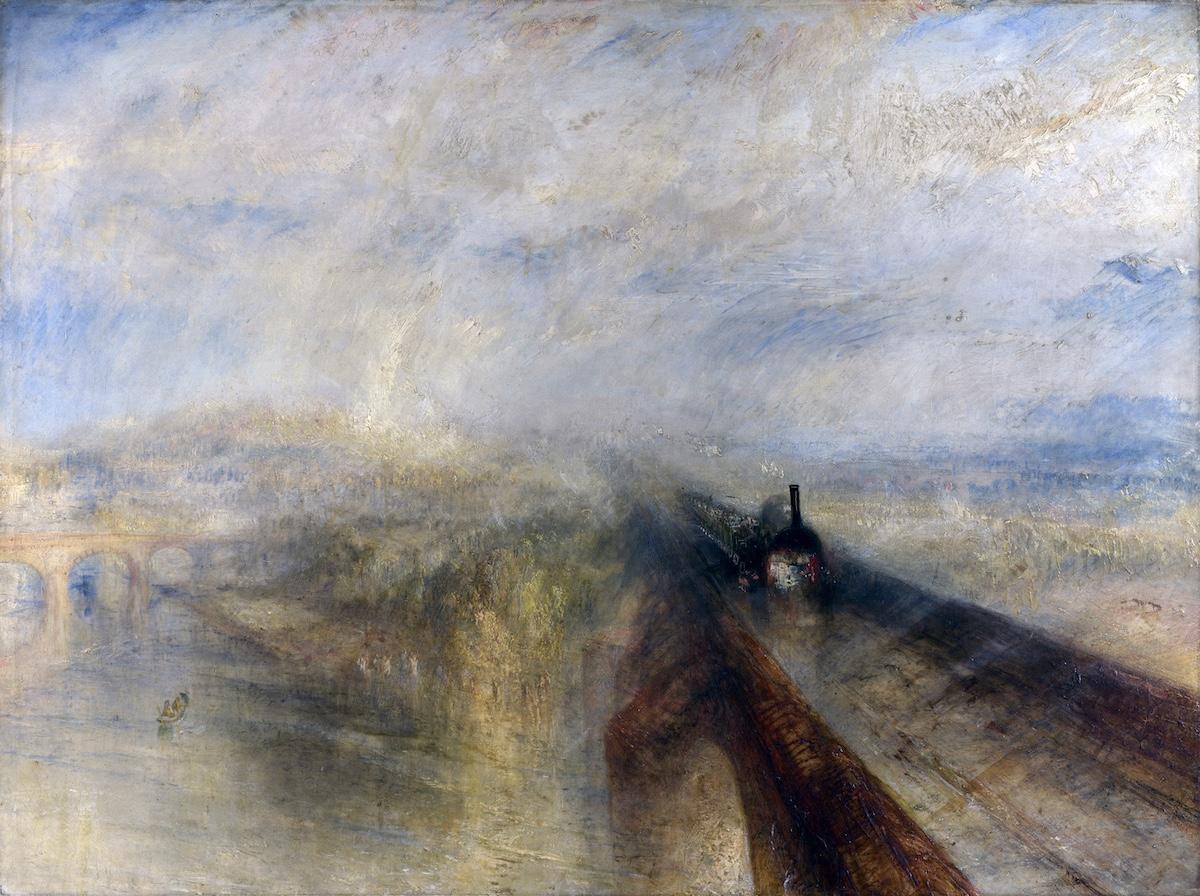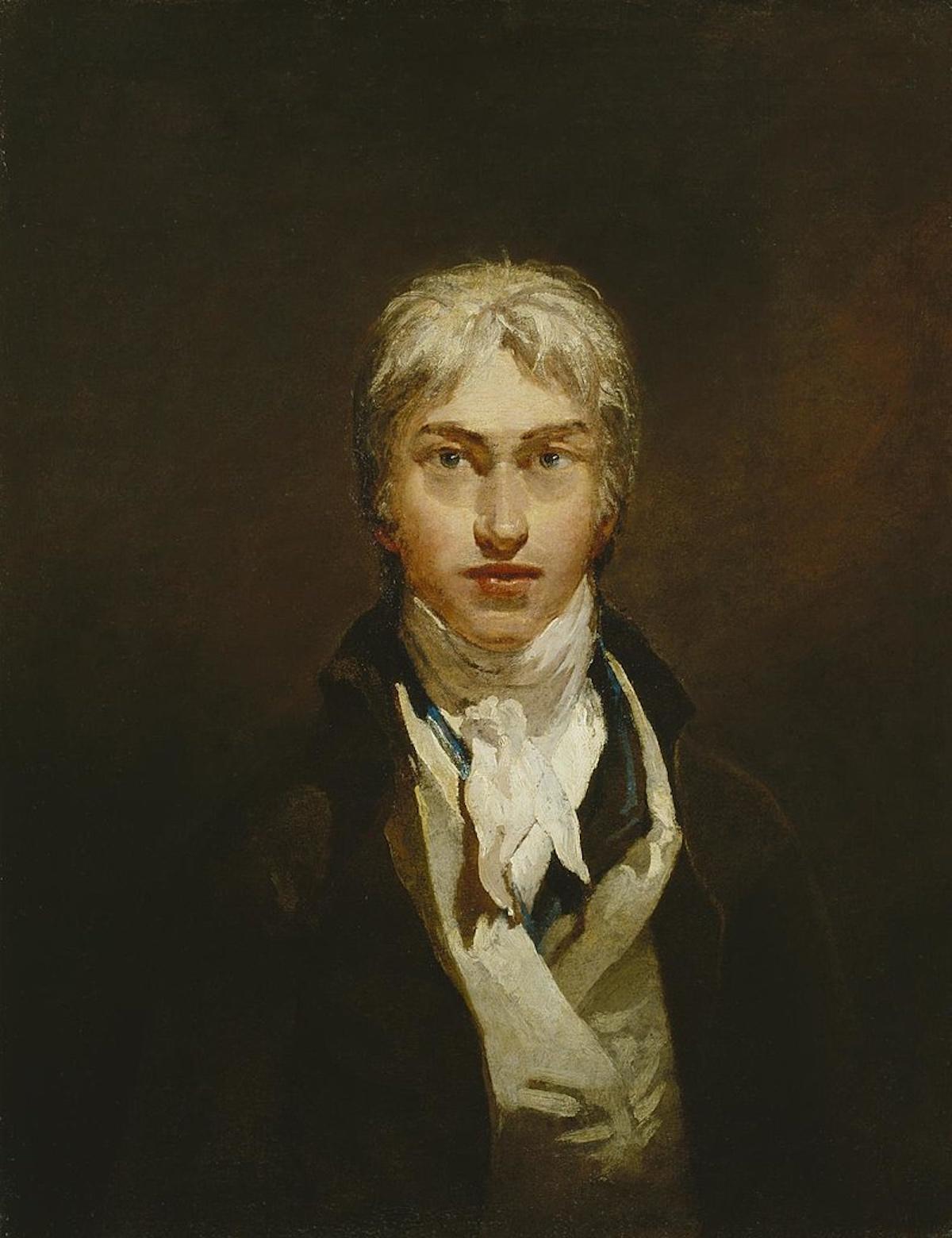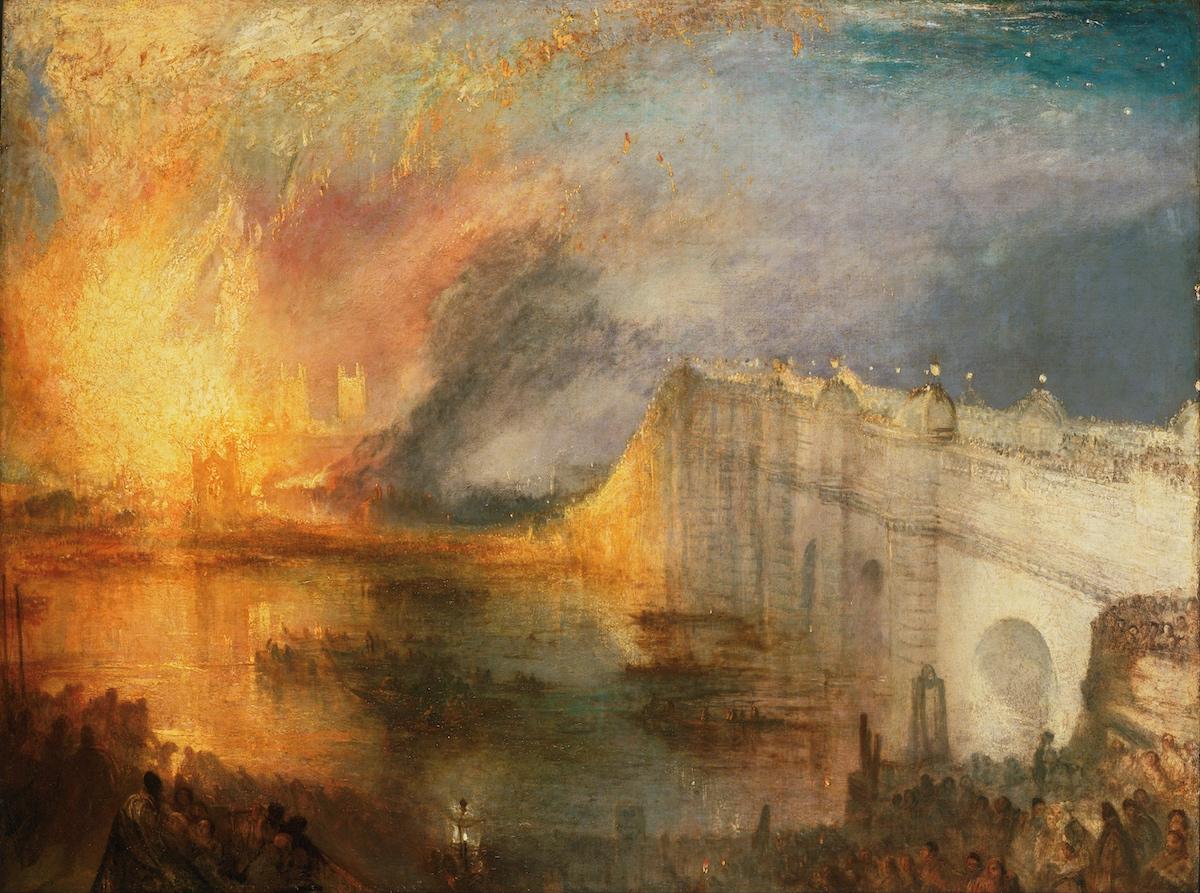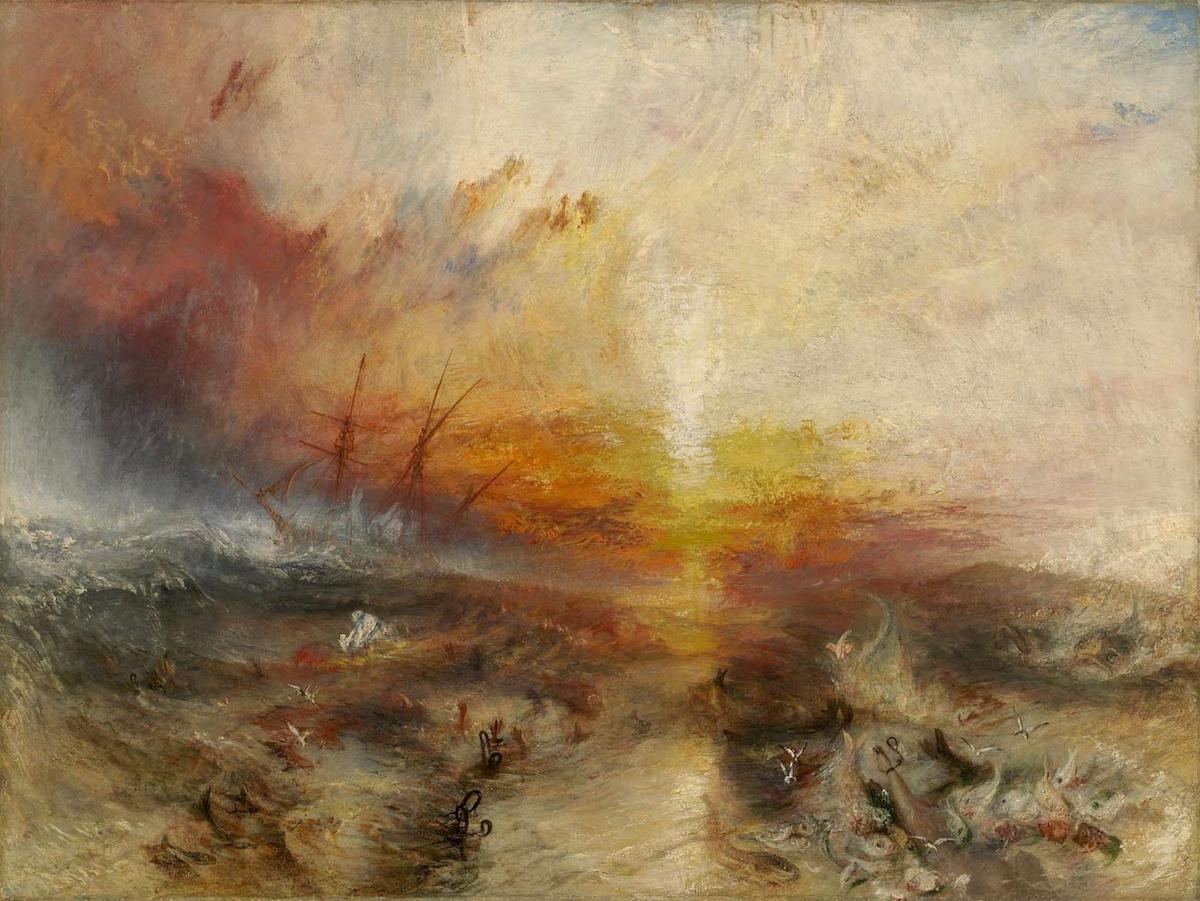At the age of 14, Turner was admitted to the Royal Academy of Art in London, where his artistic genius was immediately recognized. Just a year later, his first watercolor A View of the Archbishop's Palace, Lambeth (1790) was accepted for the Royal Academy Summer Exhibition, the first of many of his watercolor paintings to be exhibited over the next several years. In 1796, he sent in his first oil painting Fisherman at Sea (1796), a painting that was highly praised and demonstrated his ability to depict maritime scenes.
As Turner progressed through his career, his eccentric personality often got him into trouble with his contemporaries as well as veterans of the British art community. He was famously criticized by Benjamin West, president of the Academy, and Sir George Beaumont, a fellow landscape painter in the Academy, who described his expressive style of blending watercolor technique with oil paints as “crude blotches.” Despite these criticisms, he was widely recognized as an artistic prodigy that would define his generation. In 1799, Turner was elected as an associate of the Academy, where he eventually earned the prestigious title of Academician in 1802.
































